There is something magical about a road trip. Only a magic wand can transform dry dusty villages into picturesque fields brimming with sunflowers, their heads nodding in glee towards the sun. The same moody wizard has suddenly flattened the landscape, filling it with stunted vegetation and thorny shrubs and then as per his whim, created boulders and rocky cliffs along the way. Rivers thinning into streams flow around pebbles chattering along. I am driving in Bagalkote district towards Badami, earlier known as Vatapi, the capital of the early Chalukyas between the 6th-8th centuries. The town was later ruled by the Rashtrakutas, the Hoysalas, the kings of the Vijaynagar empire, the Marathas and was even under the regime of the Adil Shahi Dynasty but it still retains the stamp of the Chalukayas.
Nestled in a ravine there are forts, temples, rock cut caves and inscriptions carved in the rugged outcrop of sandstone . Standing below the Badami caves, I see the emerald green Agastya Lake glittering in the light, while the fort towers above the rock cut caves with canons watching the town. As the evening rays make the boulders blush, the red sandstone glows in the light, the tourists look like ants crawling up the rocks, their bright clothing standing out. I am surrounded by the mountains but it is the caves that beckon me.
Founded by Pulekeshi 1 who built the fort, the caves were constructed by his sons, Kirtivarman 1 and Mangalesha but the greatest ruler was Pulekeshi 11 who engaged in constant wars with the Pallavas. Vatapi is immortalised in a classical Carnatic song dedicated to Ganesha, as “ Vatapi Ganapathim Bhaje “ . Legends say that the sculpture of Ganesha was brought from Vatapi by the Pallavas who defeated the Chalukyas in one of the battles and it is now in Thanjavur. But the myth around the name “ Vatapi” takes us down to the Puranic era where, the sage Agasthya killed the Asura or demon Vatapi by devouring and digesting him.
A little monkey distracts me as I enter the first cave dedicated to Shiva. I lose myself in the dark crevices of the rugged hills which have become virtual art galleries. All the four caves have a similar architecture pattern – a verandah with pillars, a columned hall and small square like cells cut in the rock.
One of the oldest cave temples built here in the 6thcentury, there is a pantheon of Gods here from Ganesha and Karthikeya beside Shiva with his consort Parvati. The sculpture of Shiva with 18 arms in different dance poses takes your breath away as the guide says it probably depicts an early interpretation of Nataraja. Looking around I see Mahishaswaramardhini while the ceiling is dotted with sculptures.
I move on to the second cave where larger than life sculptures of Vishnu takes the form of Trivikrama, Varaha and Krishna Suddenly the cave is taken over by a group of school children who are more interested in the monkeys around than in the carvings. I leave them and enter the third cave, another dedication to Vishnu.
This is the most beautiful cave. The façade is nearly 70 feet wide and every inch is carved with sculptures. I feel humbled and dwarfed, just seeing the bold strokes of the sculptor here, who has carved such larger than life sizes of various deities such as Vishnu sitting on a coiled serpent, besides Harihara and Narasimha. An inscription here dates back to the 6th century.
Finally I am alone in a cave as all the school children have left. It is the last and it is dedicated to the Jains. I can see an uninterrupted view of the Agasthya Lake from the cave, framed with its jagged edges. Besides Mahaveera and Parshavnatha, one can see carvings of Teerthankaras, Yakshas and Yakshis besides Bahu Bali on the walls. This was probably built at a later date .
The archaeological museum is closing and I head there to see several sculptures and some of the oldest inscriptions. There are totally 18 in this town, one of them being an old Sanskrit inscription while another is one of the earliest evidences of poetry written in old Kannada. Battles fought and won are documented here as well.
There are several structural temples in the town but an unchartered course leads me atop the hill to the oldest Shivalaya, The Malegitti Shivalaya . There are three temples in all and the rocks and the boulders are my companions. Even the monkeys do not come here. The sharp whistling of the breeze, the gentle evening sun, the deep gorges down hill and the rustling of the fallen leaves lend a surreal feel. The town looks distant as I gaze around, while the cannons look me in the eye from the other end. Looking down I see the Bhuthanatha temple on the banks of the Agasthya Lake. I walk up there to see the sunset.
For more stories
Read – The temples of Aihole – a photofeature – Part 1
Read – Temples of Aihole – A photofeature – Part 2


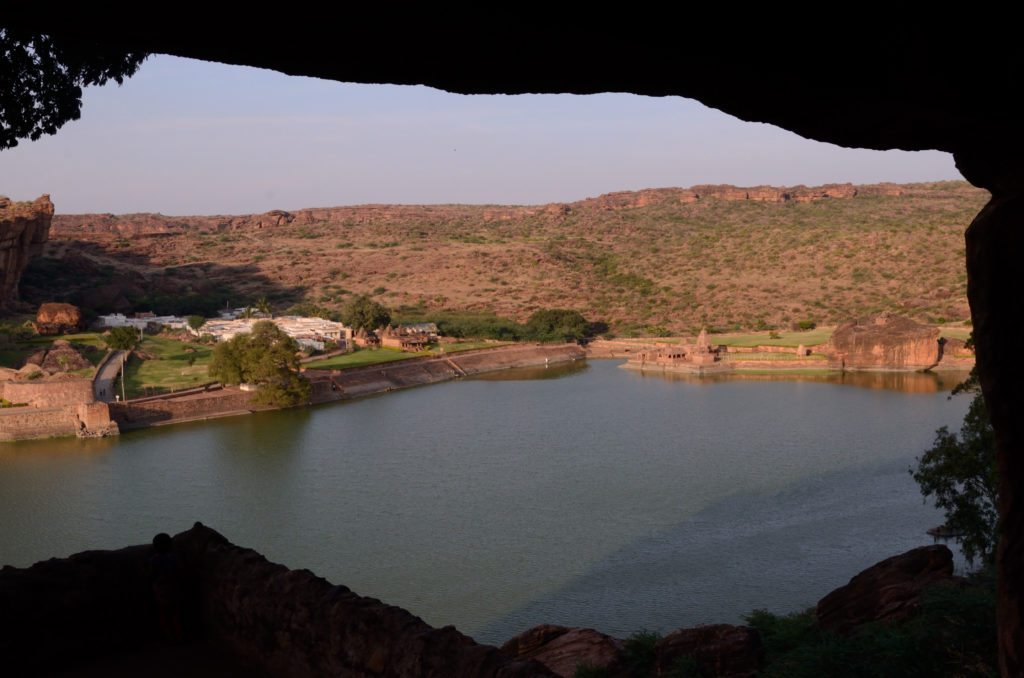
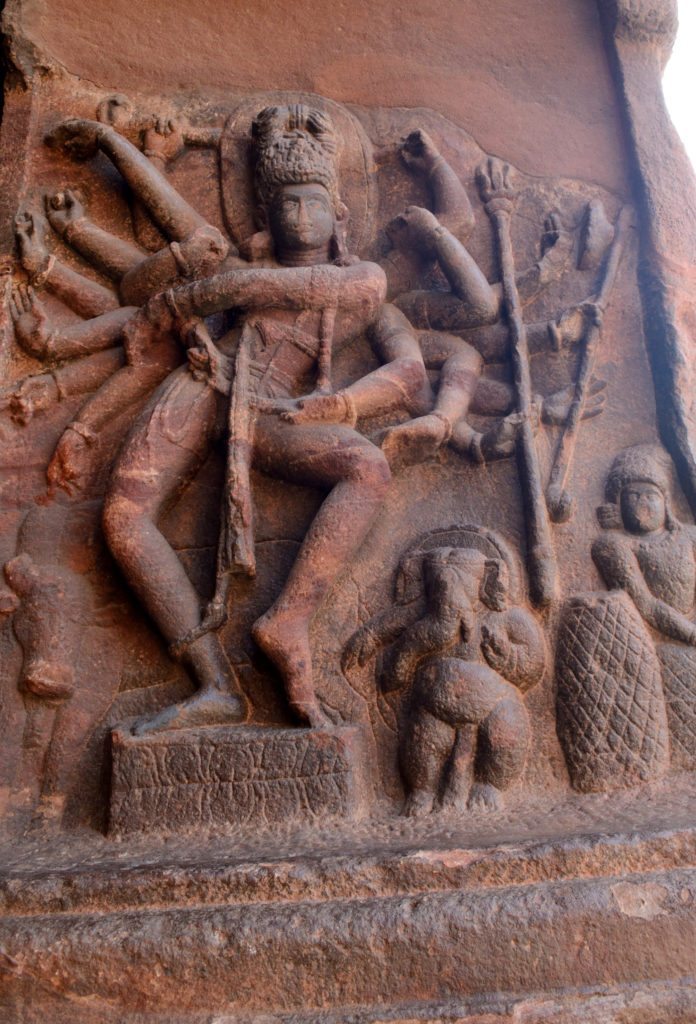
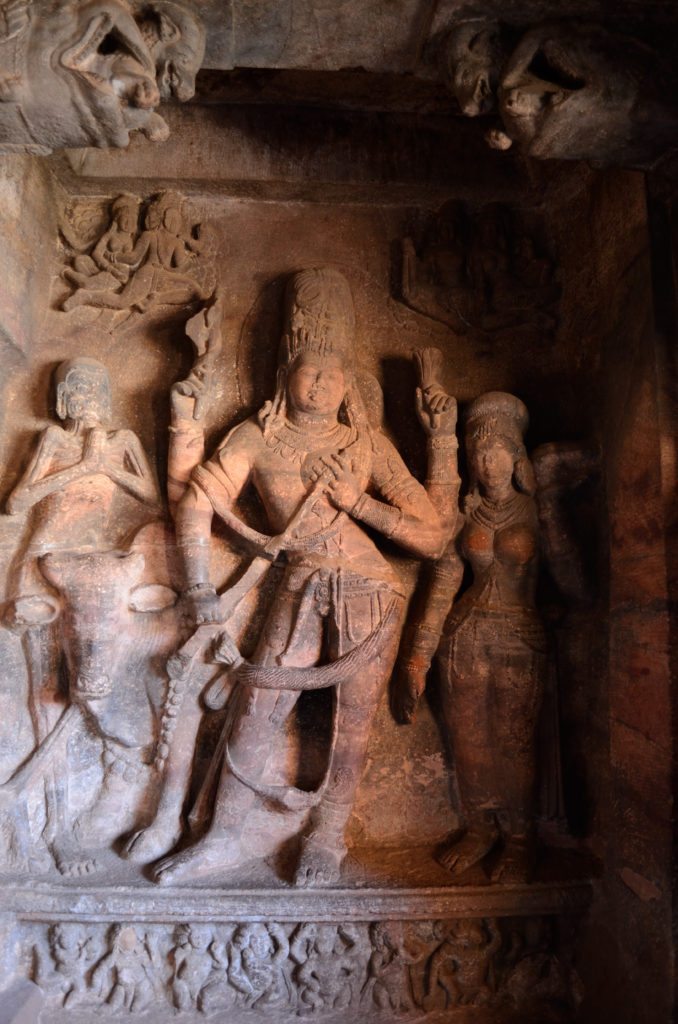
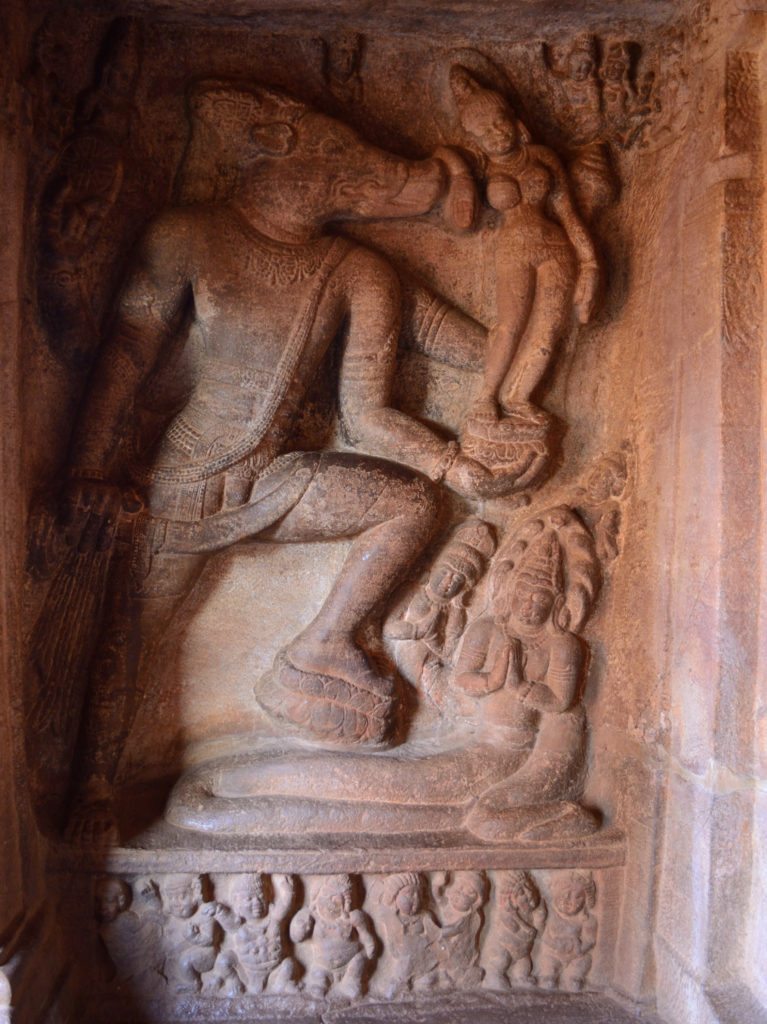

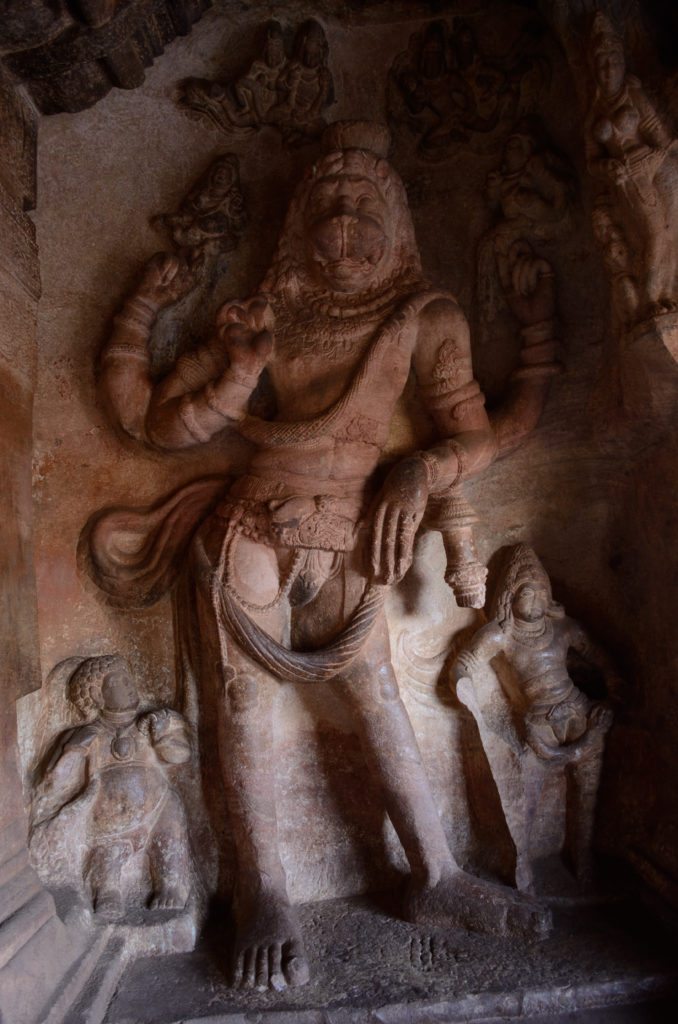
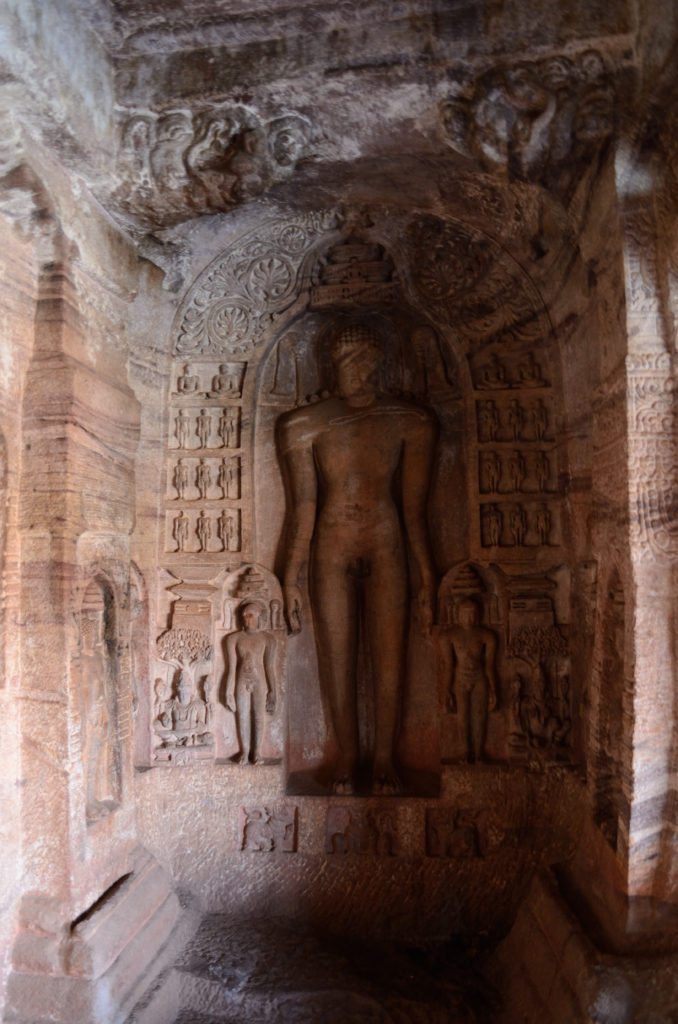
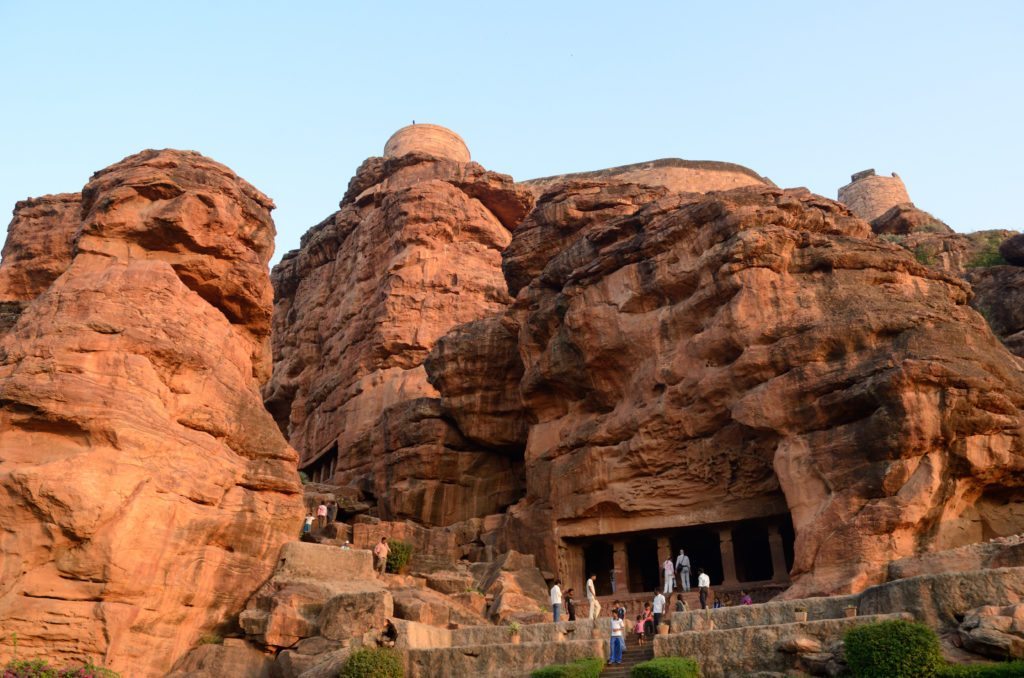
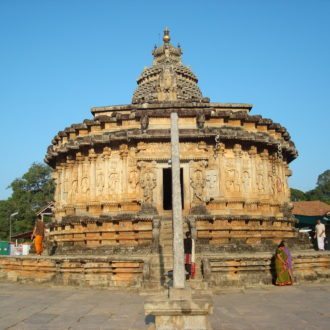
The caves of Badami are a stunner. Lovely images, Lakshmi.
Traveling to caves is something I have never tried before…it must be pretty interesting though…
its a nice place
Very interesting cave, i will visit this cave one day.
Badami caves visited there once. But the collection is awesome. !!
Traveling to caves is something I have never tried before…it must be pretty interesting though
Hey, awesome post.. few days back I visited MP and in Bidisha District watched a sculpture just like the fifth one. The resemblance struck me..
Thanks ..which temple was it in ?
Thanks for sharing nice post
Like it